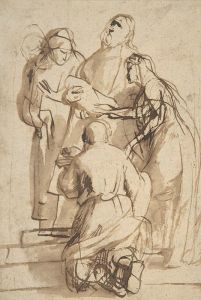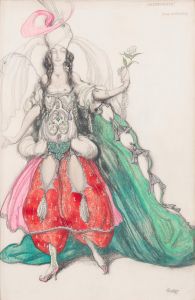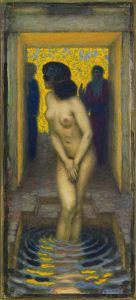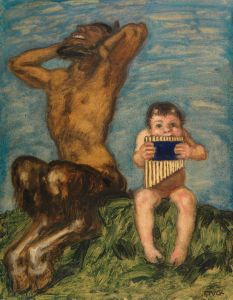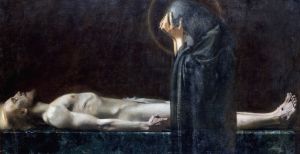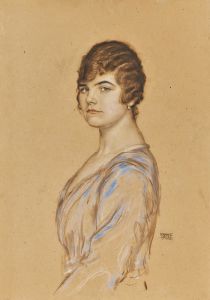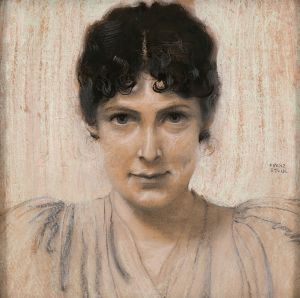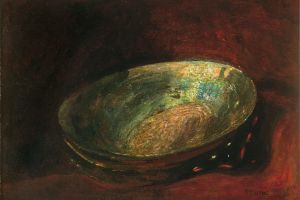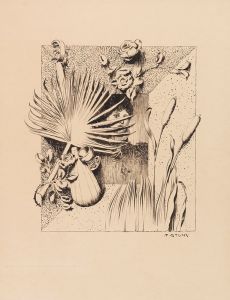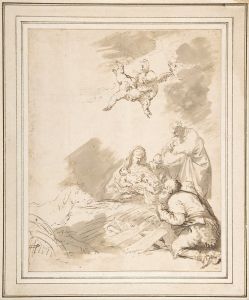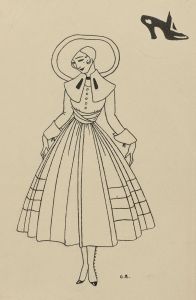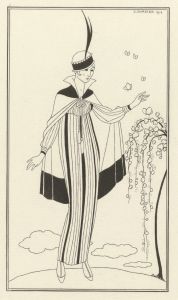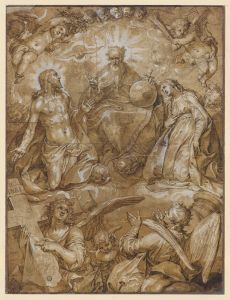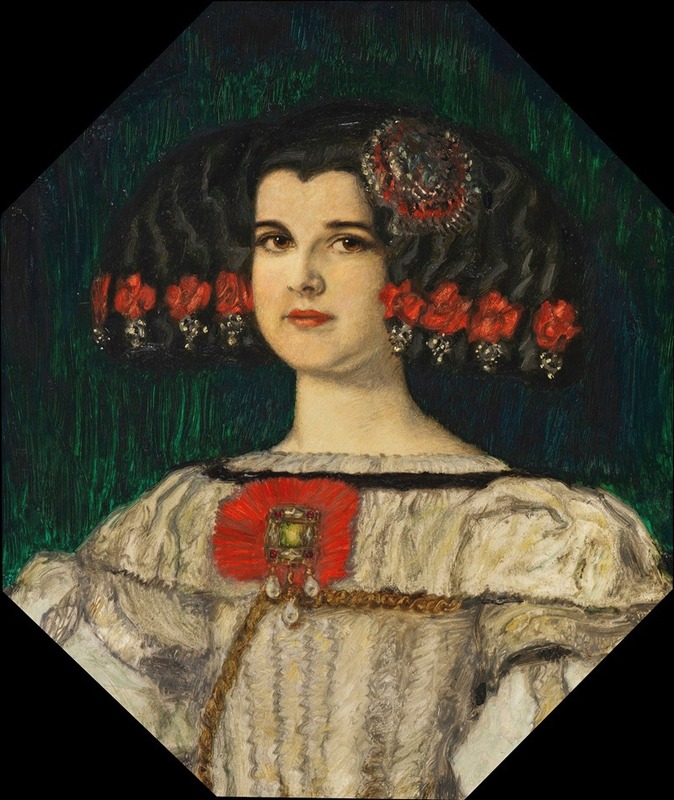
Meine Tochter Mary im Velázquez-Kostüm
A hand-painted replica of Franz von Stuck’s masterpiece Meine Tochter Mary im Velázquez-Kostüm, meticulously crafted by professional artists to capture the true essence of the original. Each piece is created with museum-quality canvas and rare mineral pigments, carefully painted by experienced artists with delicate brushstrokes and rich, layered colors to perfectly recreate the texture of the original artwork. Unlike machine-printed reproductions, this hand-painted version brings the painting to life, infused with the artist’s emotions and skill in every stroke. Whether for personal collection or home decoration, it instantly elevates the artistic atmosphere of any space.
Franz von Stuck was a prominent German painter, sculptor, and architect associated with the Symbolist movement. Born on February 23, 1863, in Tettenweis, Bavaria, Stuck became one of the founding members of the Munich Secession, an art movement that sought to break away from traditional academic art styles. His work often explored mythological and allegorical themes, characterized by a distinctive style that combined elements of symbolism and Art Nouveau.
One of Stuck's notable works is "Meine Tochter Mary im Velázquez-Kostüm" (My Daughter Mary in Velázquez Costume). This painting features Stuck's daughter, Mary, dressed in a costume reminiscent of the style of the Spanish Baroque painter Diego Velázquez. Velázquez was known for his masterful portraits and his ability to capture the essence of his subjects with a sense of realism and depth. By dressing his daughter in a Velázquez-style costume, Stuck pays homage to the Spanish master while also showcasing his own artistic skills.
The painting is a portrait that reflects Stuck's interest in historical and cultural references. It demonstrates his ability to blend different artistic influences into his work. The choice of a Velázquez costume suggests an admiration for the Spanish painter's work and an interest in exploring the themes of identity and representation through the lens of art history.
Stuck's daughter, Mary, is depicted with a serene and contemplative expression, embodying the grace and poise often associated with Velázquez's portraits. The costume itself is likely inspired by the elaborate and richly detailed clothing seen in Velázquez's paintings, which often featured members of the Spanish court. This choice of attire not only highlights Stuck's technical skill in rendering textures and fabrics but also adds a layer of historical context to the portrait.
"Meine Tochter Mary im Velázquez-Kostüm" is an example of Stuck's broader artistic practice, which frequently involved the use of allegory and symbolism. His works often contained layers of meaning, inviting viewers to engage with the painting on multiple levels. In this portrait, the interplay between the historical reference to Velázquez and the personal subject of his daughter creates a dialogue between past and present, tradition and innovation.
Franz von Stuck's contributions to the art world extend beyond his paintings. He was also a respected teacher and mentor, influencing a generation of artists through his role as a professor at the Academy of Fine Arts in Munich. His legacy is evident in the continued appreciation of his work and his impact on the development of modern art in Germany.
"Meine Tochter Mary im Velázquez-Kostüm" remains a testament to Stuck's artistic vision and his ability to weave together different artistic traditions into a cohesive and compelling work. The painting is a reflection of his fascination with the interplay of history, identity, and art, capturing a moment in time through the lens of both personal and artistic exploration.





